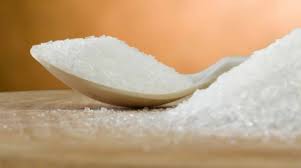Glutamate: Natural Substance With A Scapegoat Image
Glutamate is actually a completely natural substance that the human body produces itself. The amino acid is involved, among other things, in movement control and is an important nutrient for our immune cells.Many foods that you would never suspect contain natural glutamate. Tomatoes, mushrooms and salmon for example.
Worrying In Excess
As is so often the case, it is the masses that really fuel the problem. Natural glutamic acid does not cause any damage when consumed at normal levels.Synthetically created glutamate, on the other hand, cannot be judged quite as mildly. Because the artificial substance occupies a receptor in the brain that it has no place on. Glutamate binds to the receptors of the satiety hormone leptin and thus prevents the feeling of satiety from occurring.
In addition, it is considered an annoying troublemaker in the limbic system. According to several studies, glutamate is supposed to artificially generate appetite. The combination of a lack of satiety and an increased appetite can certainly be considered worrying.
Various animal experiments have also shown that the flavor enhancer glutamate indirectly leads to obesity. In comparison, rats that were given food containing glutamate ate significantly larger quantities and thus inevitably gained weight.
Recognize Flavor Enhancers
mark on industry. For several years now, the packaging of numerous food products has been adorned with very natural-looking advertising messages. There is talk of natural seasoning and the avoidance of flavor enhancers.
But if you look closely, you quickly realize that the devil is in the details. Specifically in the ingredient list of the respective food. Because not only where it says glutamate, there is also glutamate in it. The flavor enhancer can also be found under information such as seasoning or the abbreviations E 620 to E 625.
Even the natural-sounding yeast extract contains glutamate, which is not produced synthetically, but is artificially enriched using specially developed processes.In the end, it makes no difference where the artificial glutamate comes from. What is crucial is the fact that it was not left in its natural form, but was industrially concentrated and processed.
This artificial additive is mainly found in things like bouillon cubes, ready meals or chips. A look at the ingredients in your packet soup is basically self-explanatory. Because if there is only 1.5% leek in a leek cream soup, it is clear that the taste does not really have to come from the vegetable, but rather from the test tube. An unsavory idea.If you cook fresh more often, you know exactly what ends up on your plate. And what not.



.jpeg)

.jfif)
No comments:
Post a Comment